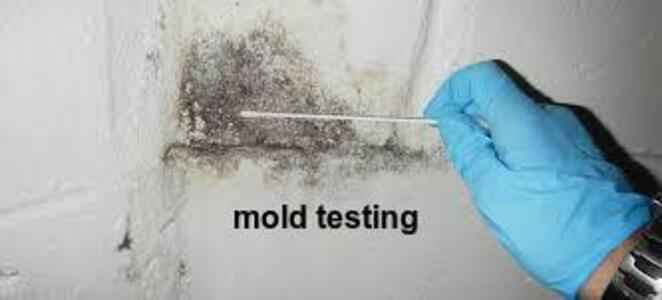Quality Mold Inspection Tx City
We offer Mold Inspection Services in Tx City , call us today!
Quality Mold Inspection in Tx City
✅Call . We are a full service mold inspection and testing company which provides mold assessments, mold inspections, mold testing and prevention to help protect you and your family from mold.
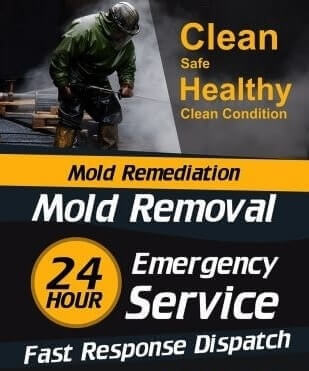
What is mold?
Mold or mould, also sometimes referred to as mildew, is a fungal growth that develops on wet materials. Mold is a natural part of the environment and plays an important part in nature by breaking down dead organic matter such as fallen leaves and dead trees; indoors, mold growth should be avoided.
Luckily, mold spores only form mold when they land on a moist surface. That means that if you can keep the interior of your home dry, you can avoid having any problems with mold. The best way to prevent mold in your home is to clean up spills, repair leaks in your roof, plumbing or HVAC system and make sure your kitchen and bathroom are properly venting moisture out of the house.
There are two major reasons to clean up and remove any mold growing in your house: mold damages the surface it is growing on and mold may aggravate allergies or asthma.
Why is mold bad?
Exposure to damp and moldy environments may cause a variety of health effects, or none at all. Some people are sensitive to molds. For these people, exposure to molds can lead to symptoms such as stuffy nose, wheezing, and red or itchy eyes, or skin. Some people, such as those with allergies to molds or with asthma, may have more intense reactions. Severe reactions may occur among workers exposed to large amounts of molds in occupational settings, such as farmers working around moldy hay. Severe reactions may include fever and shortness of breath.
Negative Health Effects from Mold
In some cases, mold in your home can make you sick, especially if you have allergies or asthma. Whether or not you're allergic to molds, mold exposure can irritate your eyes, skin, nose, throat, and lungs. Here's what you can do to combat mold problems, and take care of yourself and your home.
Mold inspection Cost in Tx City TX
A mold inspection is essential for your family’s health and well-being. Mold is a fungus and requires moisture to grow and flourish. Even in small quantities, the mold spores can quickly become airborne in the home and lead to health problems (especially of the respiratory tract) for the inhabitants. The mold can spread and cause extensive structural damage. This situation requires repairs and mold remediation. Mold inspection costs vary widely depending on the size of the property, extent of the mold inspection, number of mold samples, and other factors. We've heard of price quotes as low as $300 and as high as $3,000.
Signs of Mold in your Tx City House
- Your air conditioning or heating smells weird
- The grout between your shower tiles is dark
- Your wallpaper is peeling
- You feel like you have a cold that just won't go away
- You find dark or colored spots on your walls
- Your asthma mysteriously worsens
- You feel itchy
- Your seasonal allergies never subside
- There’s a musty odor
- You use a humidifier
- You live in a new home
- You’re tired all the time
- Your sink or toilet flooded
What affects the cost of a mold inspection Tx City?
Type of Building
Mold inspection companies usually charge more money for commercial buildings than residential ones. This is probably because of the size of the building, which is obviously larger than a residential building. They use square feet to measure the size of the building and they have a standard price for every square feet. Commercial buildings are also more complex than residential ones in that they have certain building codes, all that may make the prices of mold inspection go a little higher.
Size of the Building
As aforementioned, professional mold inspectors use square feet to determine the size of a building. Different companies charge a certain amount for every square feet. The price for the whole house is calculated by multiplying the number of square feet by the price of one square feet. A larger house will cost more than a smaller one since it has a higher number of square feet than a smaller house.
The Inspecting Company
Highly rated and experienced companies are more likely to charge a little higher than those that are just getting started, those that do not have a high rating and are new in the highly competitive industry. This is most probably because experienced companies are more engaged in many bookings and are busy, hence competitive. Despite this, it is important to note that prices do not vary as much, just a slight difference of maybe around tens of dollars. However, you will be more advantaged to work with a highly rated company because they will do a better job than one with lower ratings or a little experience.
Type and Number of Samples
Professional mold inspectors usually carry out three different tests. The first one is the air quality control sample that is aimed at determining if the airborne levels are within the acceptable limits or are above the limit. The sample is collected by the use of an air pump and a spore trap. A cavity sample is used to determine if above limit levels exist behind the walls. This sample is collected whenever signs of discoloration and moisture are detected on the walls. Surface samples on the other hand are collected from any surface that shows signs of infestation. They are done by the use of a medical swab or tape lift and are aimed at determining the source of the airborne levels.
When to Inspect for Mold
One good thing about mold- it is microscopic. Even if you don't see it you have mold in your building or house. Mold is in the natrual air outside. The question is whether you have allergens, toxigens, or pathogens in your house and the mold spore counts for
- Stachybotrys
- Chaetomium
- Aspergillus.
- Penicillium
- Fusarium
- Alternaria
Seeing mold in the cracks and corners of your walls definitely means it is growing and spreading more spores. Keep in mind that mold may also grow in places you cannot see, such as in your ducts or between your walls. It may also form colonies so tiny they escape the eye. A few situations should make you look for any mold problems in your house.
Water damage
If your basement flooded, roof leaked, or a broken pipe sprayed water all over the kitchen, you need to inspect for mold. Any place that got wet and was not quickly dried (within 24 to 48 hours) could become contaminated by mold. Purchasing a new home. There is no way to know what kind of water damage may have happened in the house you are planning to buy. The only way to find out if mold is present is to do a mold inspection. After a house has been unoccupied. If a house has been closed up and unoccupied for months or years, humidity could have built up inside and caused mold to grow. This is especially a problem in warmer areas with high humidity. After mold remediation. If you have gone through the often expensive and difficult steps to deal with a mold problem, regular mold inspections are a good idea to make sure you really got rid of it all. You see some mold. If you notice some green, blue, black or white stuff growing in your house, do a mold inspection to make sure you find it all. It might not be restricted to one location.
As a rough guideline, a mold inspection costs about the same as a regular home inspection, the kind that is done when you purchase a new home. On average, mold inspection costs $300 to $400 for small to medium-sized houses (below 4,000 square feet). Above 4,000 square feet, the cost increases to the $700 to $900 range. Keep in mind that these costs are for inspection only and do not necessarily include testing. Skipping the unneeded mold testing can save you some money.
Some contractors that specialize in mold remediation will do a mold inspection for free, though they will obviously hope to be hired for the remediation itself.
Mold Sampling Methods
Air sampling using a “spore trap” sampler. Considerable information can be obtained about the environment from which the air sample was taken. For example, determining the types and concentrations of mold spores and other particles in the sample. Surface sampling using a “tape-lift” method. This method can determine what molds are growing on a surface, if mold is present at sub-visible concentrations, or if mold spores have been settling out of the air in an unusual quantity.
Check your state health department or labor department to see if mold inspectors are required to have a special license or certification. If so, you obviously want to make sure you only work with a properly certified contractor.
After the inspection
If the mold inspection finds mold in your home, the next step is to make a remediation plan. This always begins with removing the source of the moisture that’s allowing the mold to grow. If you fail to remove the moisture, you can clean up all the mold and it will just grow back. Then, hard surfaces can be scrubbed and washed. Soft surfaces like carpets or foam tiles have to be cut out and replaced. It is impossible to clean all the mold off of porous surfaces.
This can be a do-it-yourself job if the mold is only in a small area. If the mold contamination exceeds 10 square feet, the EPA recommends calling in a contractor experienced in mold remediation. Mold can be dangerous, or at least unpleasant, to work with, especially for someone with allergies or asthma. That’s why larger contaminations are better left to professionals with the correct safety gear and cleaning equipment.
Preventing mold
Getting rid of mold in your house can be a major task, and remediation can be expensive if the mold is widespread. The best solution to mold problems is to prevent them from ever happening. Here are some tips on preventing mold:
- Repair leaks promptly. Whether it is a leak in your roof or a rusted out water pipe, fix leaks and keep moisture out of your house.
- Clean and dry things promptly. If your basement floods or condensation from your air-conditioner drips onto a carpet, dry everything out within 24 to 48 hours. Mold needs moisture to grow, so prompt drying is vital.
- Control humidity. Extremely humid air can provide enough moisture for mold to form on some surfaces. Use a dehumidifier in your basement and run air-conditioning when possible during the summer. Install vents in your kitchen and bathroom. This will keep humidity down and keep moisture under control.
Mold is a serious problem, and spotting mold contamination before it grows out of control can save you thousands of dollars. This makes the cost of a mold inspection well worth a few hundred dollars when you are buying a new house. Mold testing, however, is not really worthwhile. The important thing is, if you see mold in your house, you need to get rid of it as soon as possible.
According to the EPA’s a Brief Guide to Mold
- The key to mold control is moisture control
- It is important to begin drying flooded areas and items within 24-48 hours to prevent mold growth
- There are many types of mold, and none of them will grow without moisture
What is Mold? - Tx City
Molds are tiny fungi that grow in damp environments. Unlike plants that require photosynthesis to grow, molds survive by producing enzymes onto the raw material they are occupying and then soaking up the degraded remains of that matter. Because molds don't require a high level of nutrients to endure they can grow on almost any organic matter, from foodstuff to paper products.
Why Should It Be Removed?
Lots of people will establish allergy to the spores postponed by big mold colonies. If an individual touches a mold nest in anyway, there is the possibility they might establish a type of dermatophytes, like athlete's foot or jock itch. Mycotoxins are liquid or gaseous compounds produced by many mold nests and are considered a few of the most toxic chemicals on the planet. If this is ingested, both people in addition to animals can get seriously ill. This is why prompt attention and mold clean-up is required.
How to Stop Mold Growth in House
- Control moisture. Keep the humidity level under 60 percent.
- Dry up wet materials quickly. It only takes mold two days to grow.
- Clean, disinfect, and dry surfaces prone to mold growth. A vapor steam cleaner may .
- Repair leaks. Replace dilapidated old pipes. Fix leaks on the roof, walls, and foundation of the house. Unclog HVAC units drain regularly.
- Dry items thoroughly before storing them.
- Improve airflow at home. Start with opening closet doors more frequently and moving furniture far from walls to providing better ventilation to confined spaces. The more windows you can open, the better.
- Monitor your basement’s ventilation. Set up a foundation drain, put in a dehumidifier, insulate walls, set up a thermal plane, and let the entire room dry.
How Can I Tell If I Have a Mold Outbreak?
A professional mold inspection service can assist you figure out if mold has actually resided in your house or office. However, professional help is not always needed. Mold spores are quickly spotted, even in smaller sized colonies, and sometimes put off a musky, earthy smell. If parts of your building are cool, dark, and damp, you can be pretty sure you have mold growing there.
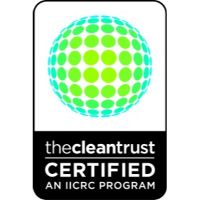
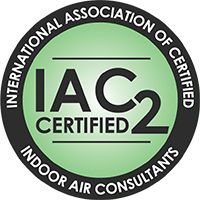
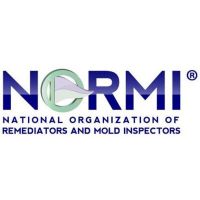
Catstrong of - Tx City
| Mold Remediation |
| More Information about Tx City TX |
More about Tx City
Catstrong is a Mold Inspection Company servicing the entire Tx City TX
area, includingImportant information for
is located in county
Latitude: ,Longitude:
Population:
All zipcodes:




